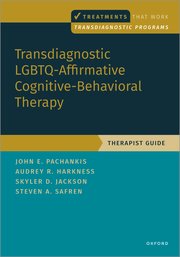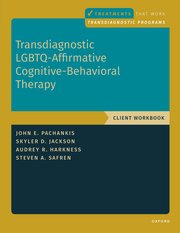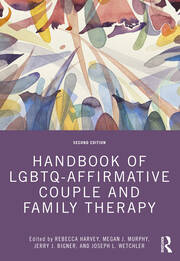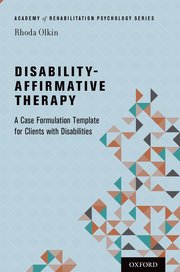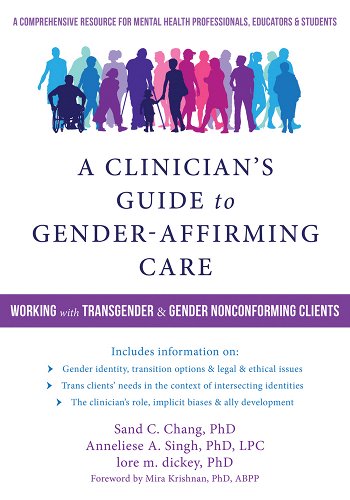Therapy
Affirmative Therapy: History, Benefits, and Effectiveness
THC Editorial Team March 28, 2023

Contents
- Overview
- What Is Affirmative Therapy?
- Background/History of Affirmative Therapy
- Applications of Affirmative Therapy
- The Potential Benefits of Affirmative Therapy
- The Effectiveness of Affirmative Therapy
- Summary/Key Takeaways
Validation, affirmation, and acceptance are crucial ingredients for one’s mental and emotional health. Some members of marginalized communities, including LGBTQ+ people, contend with ongoing feelings of tension and unease within themselves. Marginalized people often face challenges finding acceptance from others, and many have trouble accepting themselves. Affirmative therapy can help LGBTQ+ people and others marginalized by society address their mental health needs in a safe and affirming setting, accept themselves, and recognize the value they offer to their communities and society.
What Is Affirmative Therapy?
Affirmative therapy is a form of psychotherapy that is primarily used with LGBTQ+ individuals and is also beneficial for members of other marginalized groups. Therapists apply this approach “to show understanding, to demonstrate cultural competence, and to create a positive therapeutic alliance.”1
While LGBTQ+ individuals and members of other marginalized communities go to therapy for similar reasons as other people, their life experiences are frequently shaped by their identities. During affirmative therapy sessions, practitioners use verbal and nonverbal cues indicating an affirmative stance toward clients. The goal is to establish an affirming and positive position toward clients.
Affirmative therapy can help both therapists and clients in the following ways:
- address internalized biases, homophobia, and transphobia
- acknowledge the challenges LGBTQ+ people face in their daily lives
- provide support and resources
- reduce judgmental behavior toward those with non-cisgender identities
- help resolve the client’s needs or beliefs that contradict their identities
Therapists trained in affirmative therapy understand the various obstacles their clients face daily, including stigma, discrimination, an absence of support, and a lack of representation. They address these and other obstacles during sessions with their clients.
Background/History of Affirmative Therapy
Psychologist Alan K. Malyon first introduced LGBTQ+ affirmative therapy in 1982 in an article that outlined the therapeutic approach to address internalized homophobia among gay men.2 Dr. Malyon, who was gay, was interested in therapy for gay men and believed that practitioners should focus on affirming the client’s identity and value it rather than attempting to convert them from homosexuality to heterosexuality. Dr. Malyon’s initial work came when homosexuality was not fully removed from the American Psychiatric Association’s Diagnostic and Statistical Manual of Mental Disorders (DSM). “Homosexuality” was removed as a diagnosis from the second edition of the DSM in 1973 and from the International Classification of Diseases (ICD-10) in 1990.3 Malyon believed that by affirming and valuing the identities of marginalized clients, therapists could help them achieve greater wellness and self-actualization.
Malyon outlined the steps involved in affirmative therapy. In the first phase, therapists work to build rapport and establish a therapeutic alliance with their clients. During the second phase, therapists analyze and evaluate their clients’ conflicts to gain insight into their attitudes and cognitive processes. During the third phase, therapists work with their clients to consolidate their identities and help them develop intimate relationships. Finally, the fourth phase is used to help clients establish a personal sense of meaning and purpose.
In 2000, the American Psychological Association’s (APA) Committee on Lesbian, Gay, and Bisexual Concerns Joint Task Force provided 16 guidelines for psychotherapy with lesbian, gay, and bisexual clients.1,4 In 2021, the third iteration of these guidelines was provided within the APA Guidelines for Psychological Practice with Sexual Minority Persons.5 The APA suggests, “Sexual minority persons are a diverse population inclusive of lesbian, gay, bi+ (e.g., bisexual, pansexual, queer, fluid), and asexual sexual orientations.” 5 This approach draws from affirmative psychology, sexual minority stress theory, and the concepts of intersectionality.5
Applications of Affirmative Therapy
The principles of affirmative therapy may apply to a range of populations. As such, affirmative therapists may provide treatment to anyone, regardless of their sexual orientation and/or gender identity. Still, many clients seeking affirmative therapy are from marginalized communities, including the LGBTQ+ community. Affirmative therapy is often used in conjunction with other therapeutic approaches. Practitioners may combine this approach with other modalities, including cognitive behavioral psychotherapy (CBT), family and couples therapies, and others. Practitioners also aim to incorporate a perspective that people who identify as LGBTQ+ are not pathological and that homophobia, transphobia, and stigma negatively impact mental health. The therapeutic alliance is a key common factor that may support the successful application of affirmative therapy.1
Therapists practicing affirmative therapy must assess their beliefs and identify and confront internalized biases, homophobia, and transphobia. This helps them understand how societal biases and norms affect how they perceive members of the LGBTQ+ community so that they can overcome them. By combatting their own internalized biases, therapists can then build and offer safe spaces for LGBTQ+ people so their clients can better accept themselves.
Affirmative therapy practitioners may use affirming language, including their clients’ preferred pronouns and names. They understand that the LGBTQ+ community comprises multiple subgroups and that LGBTQ+ people have unique experiences pertaining to their sexuality; therefore they address each client’s individual needs. They recognize that LGBTQ+ people face harassment, a lack of safety, bullying, and prejudice from others and that those experiences can impact their mental health.
Instead of pathologizing the identities of LGBTQ+ clients, affirmative therapists focus on their client’s feelings and thoughts about their sexual identities and genders. The goal is to help people feel comfortable with their identities. They support clients during the transition or coming out process and help them develop strategies to handle stigma and express their identities while remaining free from abuse. Therapists provide individuals with LGBTQ+ resources and work to help them develop supportive relationships with others. They can also help individuals understand how their identities coexist with their religious beliefs so that they can integrate these aspects of themselves healthfully.
The APA Guidelines for Psychological Practice with Sexual Minority Persons includes the following sixteen guidelines for psychologists:5
- Understand the diversity of sexual orientations, identities, and contexts.
- Distinguish between issues of sexual orientation and gender identity and expression.
- Be affirmative toward “bi+ identities and examining their monosexist biases.”
- Understand that sexual orientations are not mental illnesses and not independently trying to change sexual orientation, which can be harmful.
- Recognize institutional discrimination towards sexual minorities and aim to promote positive social change.
- Recognize the influence of “distal” or outer/societal stressors faced by sexual minority persons and the need to promote positive social change.
- Recognize the impact of “proximal minority stressors,” or internalized psychological conflicts caused by societal stressors, on this community.
- Recognize the positive aspects involved with being a sexual minority person, including the collective resilience and spirit of the community.
- Aim to be knowledgeable about and respectful of the diverse experiences and relationships of sexual minority persons.
- Be aware of the importance and complexities of sexual health within the community.
- Aim for the understanding of family relationship dynamics for sexual minority persons.
- Aim to be mindful of and understand the experience of parents and children of sexual minority persons.
- Aim to be mindful of and understand the experiences of sexual minority persons within the educational system.
- Aim to be mindful of and understand the career-related challenges and experiences of sexual minority persons.
- Aim to educate self and others on the issues relevant to the psychological health of sexual minority persons.
- Take an affirming stance to sexual minority persons and communities aiming to improve psychological health and wellness.
The Potential Benefits of Affirmative Therapy
The following benefits might be derived from affirmative therapy:
- increased sense of being understood and validated
- reduced depressive symptoms
- increased sense of hope
- reduced gender dysphoria
- acceptance of one’s sexual orientation and identity
- coping skills for dealing with stigma and discrimination
- help with transitioning or coming out
- reduction of thoughts of self-harm or suicidal ideation
- increased self-acceptance, self-esteem and self-confidence
- help with co-occurring substance use disorders
- improved family relationships
The Effectiveness of Affirmative Therapy
Research into the effectiveness of affirmative therapy continues to emerge, demonstrating its effectiveness in treating individuals and groups.
In one study, researchers tested the efficacy of a brief affirmative therapy called AFFIRM in group sessions with LGBTQ+ adolescents. 138 participants were randomly assigned to either the AFFIRM or waitlist groups. The participants in the AFFIRM groups completed eight 2-hour group sessions over 8 weeks. The researchers found that those who completed the affirmative therapy group sessions had statistically significant reductions in depression symptoms and improved coping skills compared to those assigned to the waitlist group.6
Another study examined affirmative therapy’s effectiveness in reducing depressive symptoms, sexual compulsivity, and alcohol abuse among young gay and bisexual men. The researchers found that those who received affirmative therapy reported fewer symptoms of depression and anxiety following treatment, reduced stress, reduced alcohol abuse, and reduced risk-taking sexual behaviors such as condomless sex compared to the waitlist group.7
Another study found that among young adult gay and bisexual men with higher internalized homonegativity (internalized negative messages about homosexuality), lesbian, gay, and bisexual affirmative therapy led to more significant improvements in mental and sexual health than those with lower internalized homonegativity.8
While affirmative therapy can be helpful, clinicians must take care to assess their biases and avoid them during their sessions. One study found that microaggressions by therapists during therapy sessions significantly reduced the efficacy of affirmative therapy for LGBTQ+ individuals, pointing to the importance of therapists avoiding heteronormative statements and other actions that do not affirm the identities of their clients.9
A mixed-method, systemic review of the literature on affirmative therapy for LGBTQ+ people examined studies conducted between 2000 and 2015. The authors identified factors that made affirmative therapy more likely to be successful, in an attempt to consolidate the research findings for this approach better.10
Summary/Key Takeaways
By affirming the gender identities and sexual orientations of LGBTQ+ clients, affirmative therapists might more successfully address their mental health needs and issues. However, it’s essential for therapists who incorporate affirmative therapy into their practice with marginalized groups to examine themselves and carefully identify and eliminate internalized biases they might have to deliver more effective treatment.










